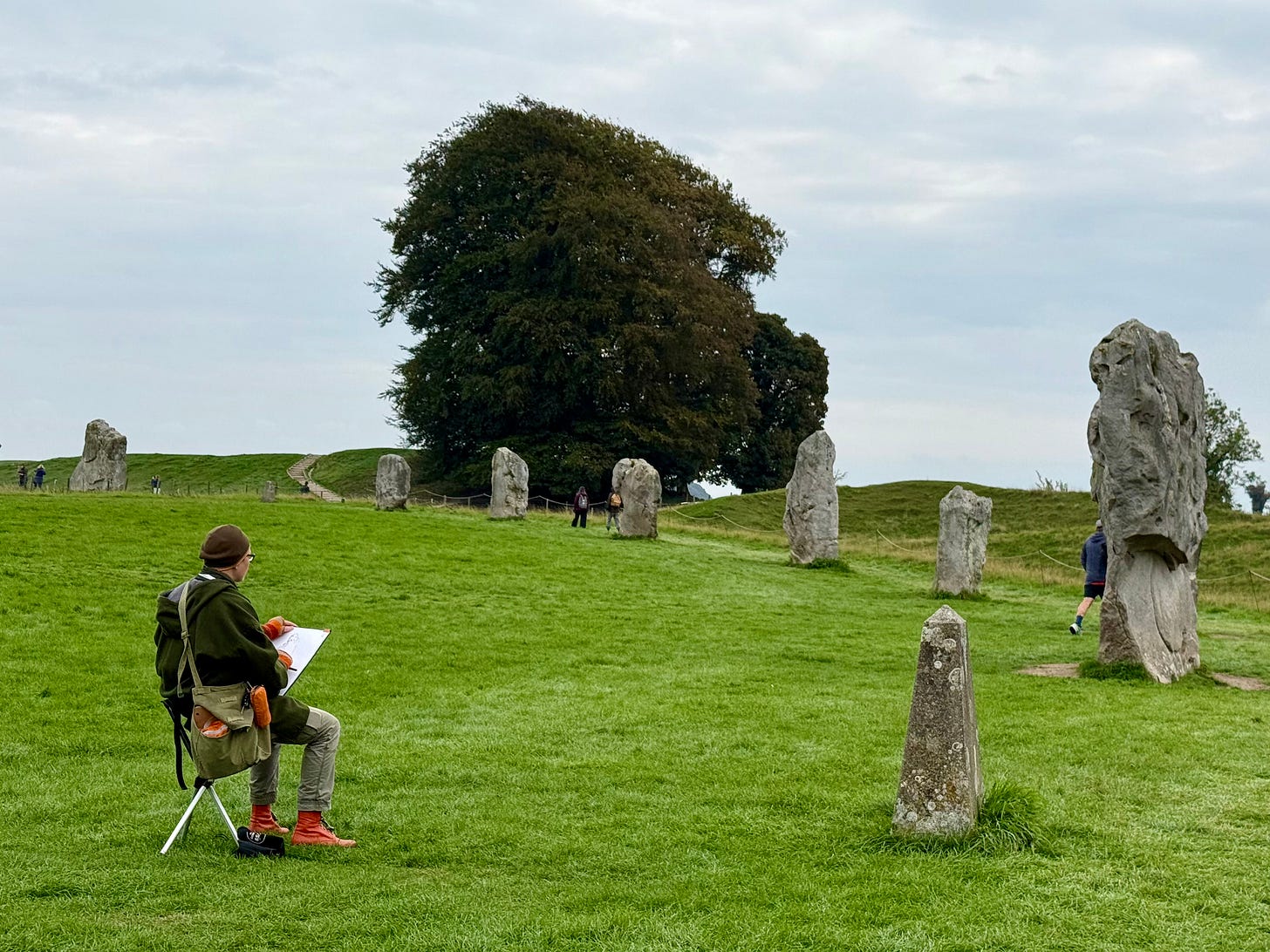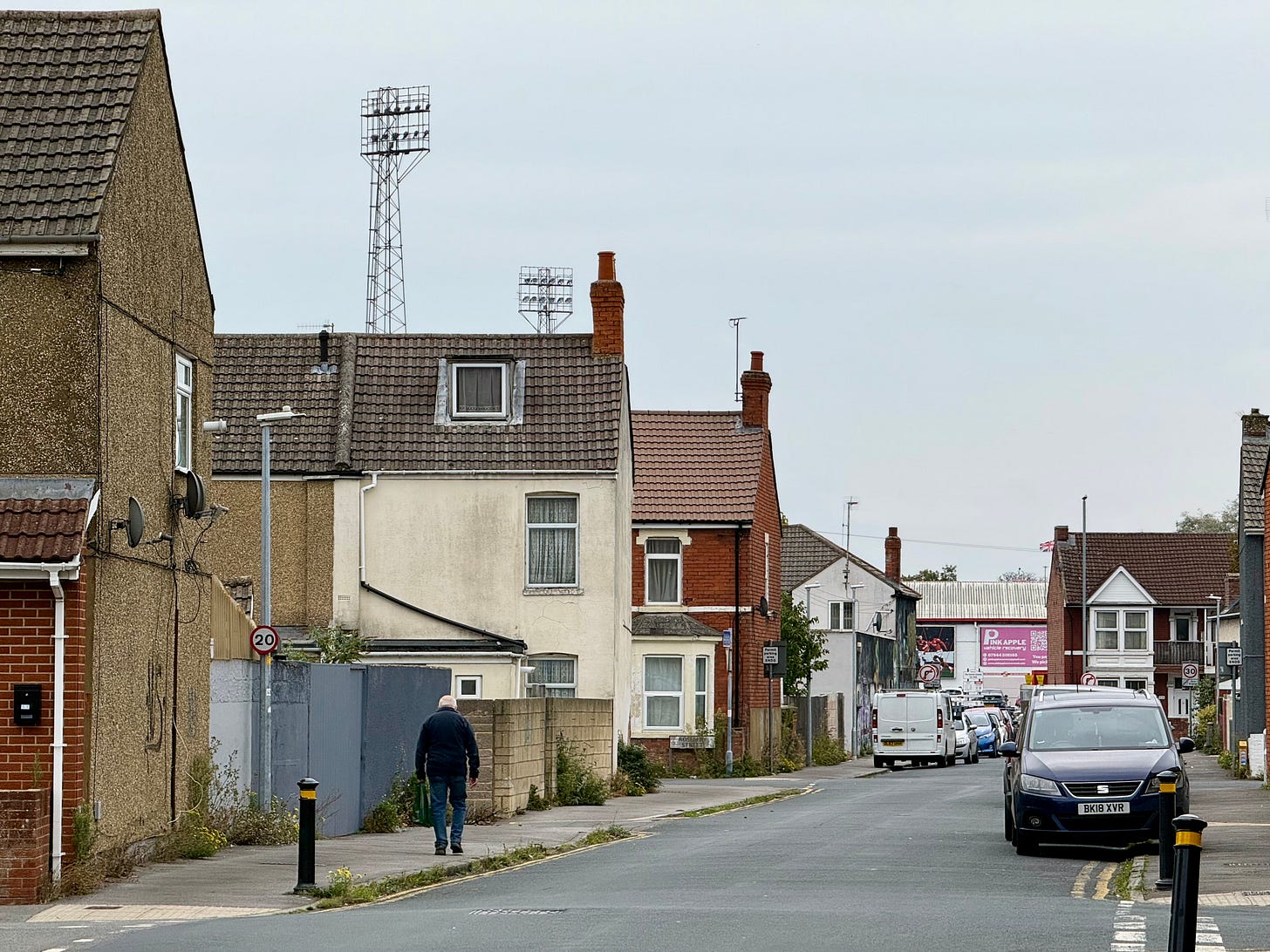Searching for the devil in darkest Wiltshire
The stone circle at Avebury, and Swindon two, Bromley nil
On the 200th birthday of the railway, I took a train to Swindon to go in search of the devil.
Admittedly, not many great stories – nor great travel blogs – start in Swindon. Neither does the devil call it home, so Passepartout and I, he coming from Bristol in the opposite to meet me, immediately boarded a bus out of town.
Swindon, though the largest town for miles around, isn’t very big. Swindon, though the largest town for miles around, isn’t very bag, and it soon gives way to the sort of countryside you’d describe as rolling, and the sort of roads best suited to tractors and farm machinery. Beyond that are hills speckled with constellations of sheep, crowned by little copses.
The devil you know
It is here, in this ancient landscape, that the devil resides, amid the hill forts, the long barrows, and the enigmatic stone circles. It’s a haunted place, dotted with standing stones like a huge cemetery.
There are henges, too, and the largest of these is Avebury. This is where the bus deposited us, alongside a gaggle of National Trust tourists in rain macs and walking boots.
Avebury is old. It could be as much as five thousand years old – impossibly ancient for these isles. In fact, it’s so old that nobody truly knows who built it, or even what it’s for, despite the assertions of those modern pagans playacting as druids. Archaeologists merely return to their old favourite: Avebury was built for ritual purposes.
It comprises three concentric circles about 347 metres across: a high earthen bank, a deep ditch, and then a ring of standing stones going all the way round its circumference. Within it are two more, smaller stone circles, and today, the ye olde cottages of the modern village, and a pub selling lunch at a ludicrous tourist mark-up.
It was the first truly chilly morning of Autumn. There was a cold wind blowing in off the hills.
Groups of elderly walkers were ambling round the circle. There was an artist on a fold-out chair, wrapped up in a scarf and hat, memorialising the stones in charcoal.
Above, a mist of jackdaws haunted the high branches of ancient, looming oak trees, their trunks hollowed with age.
Passepartout and I walked round the bank, almost going through the motions of diligently observing and photographing each stone. Descending into the circle, I ran my fingers along the pitted stone surface, feeling the contours of the weathered rock, the weight of thousands of years of hands and wind and rain.
The effect is even spookier in the fields beyond Avebury. To the immediate southeast, the stones of West Kennet Avenue stand like sentries along either side of the track.
Here the rolling hills close in; on the crest of one, silhouetted against the sky, a group of roe deer clambered down the steep incline. Beyond them, the forty-metre high manmade chalk mound of Silbury Hill, four-and-a-half thousand years old, rose like a grass pyramid out of the landscape; and further beyond that, West Kennet Long Barrow delved into the earth thousands of years ago, now with a carpark.
The effect of all this is spooky, and you realise why, in more superstitious times in the millennia after its construction, it became known as the work of the devil.
It was in the thirteenth century, when Christians saw Satan hiding round every corner, that some of the stones were given the names they still hold to this day: the Devil’s Chair, the Devil’s Quoits, and even more sinister, the Devil’s Brand-Irons.
Not content merely to name them, the locals began to demolish the henge, stone-by-stone. The destruction only ended after a man, thought to be a barber-surgeon, was crushed by a falling stone, his body crumpled underneath until it was unearthed in 1938. His killer is now know, rather cruelly, as the Barber Stone.
The devil had won, and Avebury survived, the missing stones now marked by concrete posts. Perhaps we can thank him that it still exists at all.
The Robins’ nest
Having met the devil, we returned to Swindon. It was match day, Swindon Town vs. Bromley – but the town’s bare, grey streets seemed largely empty.
Swindon is a town whose glory days are long behind it. Brunel chose it to host the maintenance works of the Great Western Railway, and for more than a century the town made its name on steam and steel.
Today, though, it has that typical post-industrial feel: run-down terraces, grey, peeling office blocks, and a shopping centre deposited in the middle of the town centre. As in so much of Britain, that once proud past is now found only in decrepit Victorian public buildings, and in the names of pubs – here the Great Western Hotel, there the Waiting Room.
Towards the County Ground, the terraces began to peel and crumble. Almost every bare wall was tagged with graffiti, and weeds crept out of the cracks in the pavement.
But even here, the patchwork of modern immigration to Britain is represented: in one anonymous terraced house, a notice on the window advertised a Portuguese consular presence, set to arrive in the coming weeks.
Eventually, the floodlights – the tall metal pylons beloved of aficionados – appeared over the roofs, and the County Ground came into view.
In every post-industrial town, the football club still feels like part of the community. The EFL’s wise choice to forbid gambling sponsorship has given the game some of its dignity back; the sponsors are now limited to local security firms, ironmongers, and kitchen appliance suppliers, and for the time being, at least, the game can still pretend it belongs to the people.
But the people were quiet today. Swindon won 2–0, an uninspiring, workmanlike performance against Bromley, a club still fortunate to even be in this division.
Except for a few half-hearted renditions of “Oh when the Reds/Go steaming in”, the noise of the crowd was barely exceeded conversational. The Bromley supporters, wherever they may have been, didn’t even register.
So quiet was it, that the man in front of us – presumably believing us to be Bromley fans – told Passepartout and I to “stop fucking talking”.



